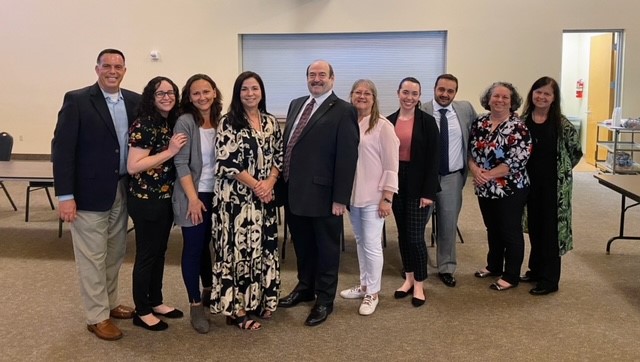
Home » Who We Are
The South Florida Regional Planning Council’s mission is to provide state and local policymakers with the information they need to build a better future for South Floridians. Our geographic areas of responsibility encompass Broward County, Miami-Dade County, and Monroe County, and all of their municipalities.
Regional Planning Councils (RPCs) in Florida exist as a response to area wide or regional circumstances and needs. The RPCs were created by voluntary interlocal agreements (most commonly under 163.01, Florida Statutes), which created a consistent geographic framework within which planning and technical assistance activities could be developed and implemented. The Florida Legislature identified the role of the RPC as “Florida’s only multi-purpose regional entity that is in a position to plan for and coordinate intergovernmental solutions to growth-related problems on greater-than-local issues, provide technical assistance to local governments, and meet other needs of the communities in each region.” The general purpose of the South Florida Regional Planning Council is articulated in its mission, which is to identify the long-term challenges and opportunities facing Southeast Florida and assist the Region’s leaders in developing and implementing creative strategies that result in more prosperous and equitable communities, a healthier and cleaner environment, and a more vibrant economy. Specific rights, duties and powers of the RPCs are defined in the Florida Statutes and will be described in the section entitled “Statutory Guidelines.”
Regionalism in South Florida began because one county government had a problem that it couldn’t solve alone. It needed the help and cooperation of its neighbors. Miami-Dade aviation officials selected a location for a major jetport in the ecologically sensitive Everglades area of western Miami-Dade County/eastern Collier County, which also affected the environment of adjacent Monroe County. In September 1969 the three counties, recognizing the benefit of working together on issues of regional impact transcending political boundaries, established the South Florida Jetport Council pursuant to Chapter 160, Florida Statutes, to allow coordination of regional-scale problems faced by two or more of the members. It was awareness by counties of the importance of cooperating to resolve regional-scale problems that led local governments in South Florida to initiate a regional coordinating mechanism. This local initiative contrasts with agencies mandated or induced by State or Federal governments.